#CNC Machining Techniques
Explore tagged Tumblr posts
Text
Using the Potential of CNC Machining
In the constantly changing field of product development, efficiency, accuracy, and innovation are always sought after. CNC Prototype Machining is the core of this endeavor; this revolutionary technology has completely changed the way prototypes are imagined, created, and executed.
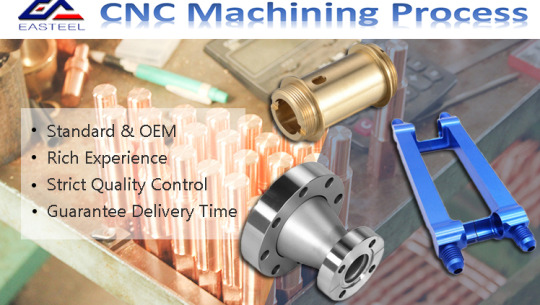
Redefining Precision: The Advantage of CNC
The unmatched accuracy of CNC prototype machining is its foundation. CNC machines are outfitted with the newest technology and are directed by exact CAD/CAM instructions to do jobs with minuscule accuracy. With CNC machining, every detail is painstakingly and precisely carved, whether it be for drilling precise holes or sculpting complex designs.
Innovation Acceleration: Accelerating the Development Cycle
Speed is crucial in the fast-paced environment we live in today. The days of protracted production schedules and never-ending revisions are over thanks to CNC prototype machining. CNC machines help engineers and designers to iterate quickly and bring things to market more quickly than ever before by optimizing the prototype process. This shortened development cycle encourages innovation and experimentation while simultaneously shortening time-to-market.
Unleashing Versatility: From Idea to Actuality
The adaptability of prototype CNC Machining China is among its most impressive features. CNC machines can easily mold a wide range of materials into working prototypes, whether they are made of metal, plastic, wood, or composite materials. The options are endless, ranging from sophisticated consumer electronics to delicate aircraft components.
Filling the Void: From Concept to Manufacturing
In addition to prototypes, CNC machining is essential for bridging the gap between production and design. CNC machines facilitate the process of moving from concept to mass manufacture by producing parts that are ready for production and of superior quality. Prototypes are guaranteed to be workable solutions prepared for practical implementation, not only functional mock-ups thanks to this smooth connection.
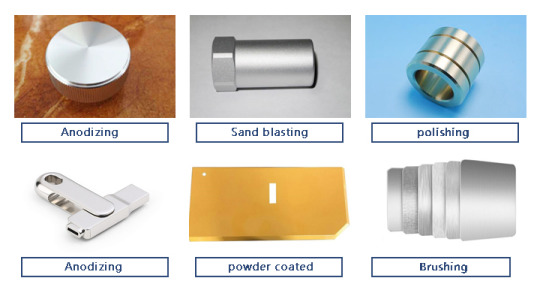
Promoting Innovation in All Sectors
Prototype CNC Machining has a significant influence that goes much beyond the boundaries of a particular sector. CNC machines are pushing innovation across a wide variety of sectors, from consumer products and medical devices to aerospace and automobiles. The future of manufacturing is being shaped by CNC prototype machining, which is at the forefront of innovations such as supply chain revolutions, improved product performance, and the ability to enable new design patterns.
#CNC Machining#CNC Machining process#CNC Machining process China#CNC Machining Techniques#CNC Prototype Machining#CNC Prototype Machining China#CNC Machining China
2 notes
·
View notes
Text

🔔 Stop Scrolling! 💥 Learn ArtCAM & Rule the CNC World!
🎓 Scope Computers – Where Designers Become CNC Experts 📍 Bhaskar Circle, Ratanada, Jodhpur 🌐 Online + Offline Classes – Learn From Anywhere on Earth!
🎯 Tailored Training For: ✔️ CNC Machine Operators ✔️ Wood Carving & Furniture Makers ✔️ Handicraft & Stone Artists ✔️ CNC Cutting & Manufacturing Units
🔥 What You’ll Learn: 🧠 2D & 3D Toolpath Mastery 🪵 Furniture & Wood Carving Techniques 🗿 Stone Cutting & Design 🛠️ Industrial-Level CNC Workflow 🎨 Bonus: AutoCAD | CorelDRAW | Photoshop | Revit | 3ds Max
💡 Why Choose Scope? ✅ Hands-On Projects ✅ Global Access – Join from Any Country ✅ Industry-Ready Curriculum ✅ 24+ Years of Excellence
📞 Call or WhatsApp: 8560000535 | 8000268898 🏛️ Scope Computers – Shaping Digital Artists Since 1999
🌟 Transform Your Skills → Design the Future! 🚀 Create. Carve. Conquer.
📣 Tag Your Friends Working in CNC / Furniture / Stone / Handicrafts! Let them know about the best ArtCAM training in the world 🌍
🔖
#scopecomputers#artcamtraining#cncdesigning#artcamdesign#cncmachine#cncwoodcarving#stonecarving#cncfactory#furnituredesign#autocadtraining#coreldrawdesign#photoshopdesign#revitarchitecture#cnccourse#artcamworldwide#cnctraininginstitute#artcamglobal#digitalcarving#cncworkflow#artcamproject#cnctrainingonline#cnccuttingdesign#cncdesignerlife#scopecomputersjodhpur#learnartcam#cncworld#cncindia#wooddesigner#stonedesigner#cnclifestyle
2 notes
·
View notes
Text
Techniques and craftmanship methods require for Jewelry making
Jewelry making involves a wide range of techniques and craftsmanship methods, each requiring specific skills, tools, and materials. Here are some of the most common techniques used in jewelry making, whether for handmade artisanal pieces or mass-produced collections:
Hand Fabrication
Sawing: Using a jeweler’s saw to cut metal sheets into desired shapes.
Filing & Sanding: Smoothing and refining metal surfaces or edges after cutting.
Soldering: Using heat to melt solder (a metal alloy) to join pieces of metal, such as attaching clasps, links, or settings.
Forging: Shaping metal by hammering it to create texture, thin it out, or curve it.
Polishing: Using buffing machines, wheels, or cloth to achieve a high-shine finish on the metal.
Casting
Lost Wax Casting: A mold is created from a wax model, which is then melted and replaced with molten metal. This is one of the oldest techniques used for making detailed metal jewelry pieces.
Centrifugal & Vacuum Casting: Used to ensure the molten metal flows evenly into the mold, minimizing air bubbles and imperfections.
Stone Setting
Prong Setting: Small metal prongs are used to hold a gemstone in place. Common for engagement rings.
Bezel Setting: A metal rim encircles the gemstone to hold it securely.
Pavé Setting: Multiple small gemstones are set closely together, often giving the illusion of a continuous surface of stones.
Channel Setting: Gemstones are set between two strips of metal, allowing for a seamless, smooth look.
Flush Setting: The gemstone is set flush with the metal surface, offering a sleek and modern aesthetic.
Gypsy Setting: Similar to flush setting but usually involves a hammered finish around the gemstone, used for bold, simple designs.
Engraving & Embellishment
Hand Engraving: Using sharp tools to carve intricate patterns or designs into metal surfaces.
Laser Engraving: A modern technique that uses lasers to create detailed engravings or inscriptions, often used for personalization.
Etching: Using acid or other chemicals to corrode the surface of the metal in specific patterns, creating a textured or detailed design.
Filigree
Wire Work: Fine wires of gold or silver are twisted and shaped into intricate designs, often with lace-like appearances. This technique requires high precision and is often used in traditional jewelry.
Enameling
Cloisonné: Small cells or compartments are created with metal wire, which are then filled with enamel (colored glass powder) and fired to create vibrant patterns.
Champlevé: Enamel is applied into recessed areas of metal, then fired to create a colored design.
Plique-à-Jour: A transparent enamel technique that allows light to shine through, giving a stained-glass effect.
Hammering & Texturing
Chasing: A technique where the surface of the metal is hammered from the front to create patterns or designs.
Repoussé: The reverse of chasing, where the metal is hammered from the back to create a raised design.
Texturing: Using different hammers, stamps, or other tools to create a variety of surface textures, such as hammered, brushed, or matte finishes.
Wirework
Wire Wrapping: Jewelry made from twisting and wrapping wire into shapes and loops, often around gemstones, beads, or crystals.
Weaving & Knotting: Using wire or string to weave intricate patterns, often incorporating beads or small stones.
Beadwork
Stringing: Threading beads, pearls, or gemstones onto a string or wire to create necklaces or bracelets.
Knotting: Tying knots between beads (commonly pearls) to ensure they don’t rub against each other and for added strength.
Loom Beading: Using a loom to weave tiny seed beads into patterns for bracelets, necklaces, or other accessories.
Electroforming
Metal Coating: This is a process where a base material (such as a wax or organic object) is coated with a metal layer through electroplating. It’s commonly used for creating lightweight, hollow jewelry pieces.
CNC & 3D Printing
CNC Machining: This computerized technique is used to carve precise patterns and designs into metal or wax, enabling intricate designs that are difficult to achieve by hand.
3D Printing: Used for prototyping or creating complex designs, 3D printing involves creating a wax or resin model layer by layer, which can then be cast in metal using traditional techniques.
Inlay & Marquetry
Stone Inlay: Stones, such as turquoise or lapis lazuli, are cut into thin pieces and inserted into metal grooves to create decorative designs.
Wood or Shell Inlay: Wood, shell, or other non-metal materials are inlaid into metal surfaces to create intricate designs or mosaics.
Embossing & Stamping
Stamping: Using metal stamps or dies to create patterns or letters on the surface of a piece.
Embossing: Using pressure to raise designs on metal surfaces, creating a three-dimensional effect.
Granulation
Beading Technique: Small metal beads or granules are applied to the surface of a piece and soldered to create intricate designs, often used in ancient and traditional jewelry styles.
Soldering & Welding
Soldering: Used to join metal pieces together with the help of solder and heat.
Laser Welding: A modern technique using laser technology to weld small or delicate pieces of metal together, often for intricate repairs.
Pearl & Bead Setting
Knotting: Hand-knotting is used in pearl necklaces to separate each pearl and add durability.
Glue Setting: Some beads and pearls are set using adhesives, especially in designs where drilling holes isn't practical.
By mastering these techniques and methods, jewelry makers can produce pieces ranging from simple, minimalist designs to complex, ornate creations. The choice of technique depends on the desired aesthetic, materials used, and the skill level of the jeweler.
5 notes
·
View notes
Text
Summary Analysis of CNC Milling Process

In modern manufacturing, CNC milling technology is widely used for its high precision and flexibility. Whether it's a mechanical part, an automotive component, or a component for a medical device, CNC milling provides excellent machining results.
What is CNC Milling?
CNC milling is a computer-controlled machining process that utilises a rotating tool to cut a workpiece. CNC milling allows for greater accuracy and consistency than traditional manual milling. It is often combined with other machining methods (e.g. turning, drilling) to meet different and diverse manufacturing needs.
Workflow of CNC Milling
Design stage In the initial stages of CNC milling, designers use Computer-Aided Design (CAD) software to create a model of the product. Commonly used software includes SolidWorks and Autodesk, which are tools that help designers accurately draw the shape and dimensions of the desired part.
Programming stage Once the design is complete, the CAD file needs to be converted to G-code, a language that CNC machines can understand. With Computer-Aided Manufacturing (CAM) software, the design files are converted into machine-executable instructions that enable automated machining.
Machine setting During the machine set-up phase, the workpiece needs to be fixed to the table and a suitable tool selected. At the same time, the operator needs to set the initial co-ordinates to ensure accurate positioning during machining.
Advantages of CNC Milling
High precision and dimensional stability CNC milling allows for micron-level machining accuracy, ensuring consistency from part to part.
Complex shapes can be processed Whether it's a simple flat surface or a complex three-dimensional structure, CNC milling can handle it with ease.
Efficient production capacity Due to its high degree of automation, CNC milling can significantly increase productivity and shorten lead times.
Applications of CNC Milling
CNC milling technology is used in a wide range of industries, including:
Mechanical parts: Used in the manufacture of key components in a variety of mechanical equipment.
Automotive parts: High-precision parts for the automotive industry, such as engine components.
Medical device parts: Ensure the reliability and safety of medical devices.
Optical product parts: For the production of optical instruments and related products.
Frequently Asked Questions
What materials can be CNC milling machined? CNC milling is suitable for a wide range of materials, including metals (e.g. aluminium, steel), plastics, wood, and more. However, for some materials, such as ceramics or certain composites, the machining is more difficult and requires special handling.
What are the limitations of CNC milling? Despite its advanced technology, CNC milling has some limitations. For example, machining may be limited for internal vertical angles or very complex small structures.In addition, high hardness materials may lead to faster tool wear, which can affect productivity.
Comparison of CNC milling with other manufacturing technologies The advantages and disadvantages of each can be seen when comparing CNC milling with other manufacturing techniques such as 3D printing. CNC milling is generally superior to 3D printing in terms of accuracy and surface finish, but 3D printing has advantages in rapid prototyping and complex geometries. In terms of cost-effectiveness, the choice of technology depends on specific project needs and budget.
Summary
In summary, CNC milling is an indispensable manufacturing technology that plays an important role in several industries with its efficiency, precision and flexibility.
#prototyping#prototype#rapid prototyping#prototype machining#precision machining#cnc machining#cnc milling#machining parts#cnc milling 5 axis#cnc milling machining#cnc milling turning#precision cnc milling#cnc milling parts
2 notes
·
View notes
Text
Pipe Bending Masterclass: The Science and Craft Behind Perfect Bends
youtube
Pipe bending is a critical process in various industries where precise pipe configurations are required for functionality, aesthetic purposes, or optimal fluid flow. One of the most precise fabrication methods used for this purpose is mandrel pipe bending, which is designed to avoid distortion, wrinkling, or collapse of the pipes. The process ensures that pipes are bent smoothly, maintaining their structural integrity and allowing for high-quality outputs. Let's explore the intricacies of mandrel pipe bending, including the types of mandrels used, the machinery involved, and why this method is preferred over other bending techniques, particularly in industries such as automotive and aerospace.
Understanding Mandrel Pipe Bending Mandrel pipe bending is a specialized technique where a mandrel, which is a rod or support, is inserted into the pipe during the bending process. The role of the mandrel is to maintain the interior shape of the pipe as it bends, preventing it from wrinkling, collapsing, or otherwise distorting. This is crucial when working with thinner pipes or when a pipe needs to be bent to a tight radius.
When pipes are bent without the support of a mandrel, they are susceptible to deformation, which can compromise their integrity and reduce their efficiency. This method, therefore, has become essential in ensuring precision and quality for industries where smooth fluid dynamics and consistent pipe dimensions are key.
Types of Mandrels Used in Pipe Bending Different types of mandrels are used in mandrel pipe bending, each serving a particular purpose based on the pipe's properties and the desired bend radius. The most commonly used types include plug mandrels, ball mandrels, form mandrels, and sand mandrels.
The plug mandrel is the simplest type, providing basic support for less challenging bends. It is often used when the pipe material is not prone to significant deformation. On the other hand, the ball mandrel, also known as the flexible mandrel, consists of multiple interconnected balls that offer greater flexibility. This type is ideal for bending pipes that require intricate curves, as the interconnected balls move with the pipe, allowing for smooth bends without compromising its shape.
Form mandrels, also called solid rods, provide robust support throughout the length of the bend. These mandrels are typically used when very precise bends are required, offering continuous support that minimizes the risk of deformation. Sand mandrels, while less common, involve filling the pipe with sand before bending. This method is suitable for specific applications where internal support is necessary, but other mandrel types are not viable.
The choice of mandrel depends on factors such as the material of the pipe, its thickness, and the required bend radius. Using the appropriate mandrel ensures the pipe maintains its roundness, preventing issues like ovality or buckling that could affect the pipe's performance.
Machinery Used in Mandrel Pipe Bending Mandrel pipe bending requires specialized machinery designed to accommodate the mandrel and apply the necessary force to bend the pipe accurately. CNC pipe benders, rotary draw benders, and hydraulic benders are the primary types of machines used in this process.
CNC (Computer Numerical Control) pipe benders are popular for mandrel bending due to their high precision and repeatability. These machines are capable of producing consistent bends, making them ideal for projects that require intricate bends or high volumes. By using a CNC machine, manufacturers can achieve tight tolerances and ensure that every bend is identical to the specifications.
Rotary draw benders use a fixed radius die to bend the pipe around a predetermined form. The mandrel is inserted into the pipe to provide internal support during the bending process, ensuring the bend is smooth and consistent. This method is commonly used in industries like automotive, where precise bends are critical to the performance of components like exhaust systems.
In some cases, hydraulic benders may be used in combination with a mandrel for heavy-duty applications. These machines provide the power required to bend thick or large-diameter pipes while ensuring accuracy. The use of advanced machinery in mandrel pipe bending helps minimize waste and produce high-quality output.
Why Choose Mandrel Pipe Bending? Mandrel pipe bending is preferred over other bending methods for several important reasons. First and foremost, this technique prevents deformation of the pipe, such as wrinkling or collapsing, which is particularly crucial when working with thin-walled pipes or achieving tight radii. When pipes are bent without sufficient internal support, they are more likely to suffer from these issues, compromising their structural integrity. The mandrel effectively eliminates this problem by providing internal reinforcement during the bend.
Another significant advantage of mandrel pipe bending is its high precision. Industries like automotive and aerospace require consistent and accurate bends to ensure components fit perfectly and function as intended. In these industries, even minor inaccuracies can lead to significant issues in performance and safety. Mandrel bending ensures that pipes meet the exact specifications required, reducing the risk of malfunction or failure.
Additionally, mandrel bending ensures that the internal surface of the pipe remains smooth, which is vital for applications involving fluid flow. Any disruption or wrinkling inside the pipe can lead to turbulence, reduced efficiency, and even potential damage to other components in the system. The smooth internal surface produced by mandrel bending allows for optimal fluid dynamics, making it a preferred choice for systems involving liquid or gas transport.
This technique is also highly versatile, making it suitable for use with a wide range of materials, including stainless steel, aluminum, and copper. Its versatility allows it to be employed in various applications, making it the go-to method for projects that require different types of pipes, all while maintaining quality and accuracy.
Common Applications of Mandrel Pipe Bending Mandrel pipe bending is used across a wide range of industries due to its precision and reliability. In the automotive industry, it is essential for the production of exhaust systems, roll cages, and chassis components. These components must be bent precisely to fit into specific configurations within a vehicle, and any distortion could compromise both performance and safety.
The aerospace industry also benefits from mandrel pipe bending, where exceptional quality and accuracy are necessary to meet stringent safety standards. In aerospace applications, mandrel bending is used to manufacture hydraulic lines, fuel systems, and structural components, all of which must meet high tolerances to ensure the safety and reliability of aircraft.
In addition to the automotive and aerospace industries, mandrel pipe bending is also widely used in furniture and architectural design. Many modern furniture pieces and architectural elements require aesthetically pleasing curves, and mandrel bending is ideal for creating these smooth bends without distortion. The result is a visually appealing product that meets both functional and design requirements.
The marine industry is another sector that takes advantage of mandrel pipe bending. Components like handrails, exhaust pipes, and other structural parts must withstand harsh marine environments while maintaining their integrity. Mandrel bending provides the precision needed to produce these components without compromising their durability.
Conclusion Mandrel pipe bending is an essential pipe fabrication method that provides precise, high-quality bends while maintaining the structural integrity of the pipes. The use of different mandrel types and advanced machinery ensures that pipes are bent without distortion, making this technique invaluable for industries requiring accuracy and reliability.
By preventing deformation and ensuring smooth internal surfaces, mandrel pipe bending supports optimal fluid dynamics and structural performance. Whether in automotive, aerospace, architectural, or marine applications, mandrel pipe bending continues to be a preferred technique for achieving high-quality, consistent bends that meet stringent industry standards. This method not only enhances the functional capabilities of pipes but also contributes to the safety and efficiency of the systems in which they are used.

3 notes
·
View notes
Text
Mastering Woodworking with the Router Table 4x8: Elevate Your Craft with Precision and Versatility
In the world of woodworking, achieving professional-grade results relies heavily on having the right tools at your disposal. Among these tools, the router table 4x8 stands out as an essential piece of equipment for both novice and experienced woodworkers. This article explores the features, benefits, and applications of a router table while also comparing it to the increasingly popular desktop CNC machine.
What is a Router Table 4x8?
A router table 4x8 is a large woodworking device designed to support a router, enabling it to make precise cuts and shapes in various materials. The "4x8" designation refers to the dimensions of the tabletop, providing ample space for handling large workpieces. This expansive surface allows for increased stability and control, essential for executing detailed woodworking tasks.
Benefits of Using a Router Table 4x8
Enhanced Stability and Control: The larger size of a router table provides a stable working environment, which helps minimize vibrations and errors during the routing process. This stability is particularly beneficial when working with intricate designs or larger boards.
Versatile Applications: Router tables are incredibly versatile and can perform numerous tasks, such as shaping edges, creating grooves, and making joinery cuts. With adjustable speeds and heights, you can tailor your routing operations to suit various woodworking projects.
Improved Safety: Operating a router table significantly reduces the risk of injury compared to using a handheld router. The secure positioning of the workpiece minimizes kickback and enhances user safety, allowing for a more focused and productive work environment.
Compatibility with Different Router Bits: A router table 4x8 is designed to accommodate a wide range of router bits. This flexibility enables woodworkers to explore diverse techniques and styles, facilitating the creation of unique designs and finishes.
Comparing Router Tables and Desktop CNC Machines
Both the router table 4x8 and desktop CNC machines have their merits, and understanding their differences can help you choose the right tool for your needs.
Precision and Automation
Desktop CNC machines excel in precision and automation, making them ideal for detailed and repetitive tasks. These machines use computer-controlled settings to execute intricate designs with high accuracy, which can be especially beneficial for commercial woodworking applications. However, they often require significant upfront investment and time to master the software.
Hands-On Flexibility
In contrast, a router table 4x8 offers a more hands-on approach, allowing for immediate adjustments and manual control over the routing process. This hands-on experience fosters creativity, enabling woodworkers to experiment with different techniques and designs. The tactile nature of routing can enhance the enjoyment of woodworking and lead to innovative results.
Selecting the Right Router Table 4x8
When choosing a router table, keep these considerations in mind:
Build Quality: Select a router table with a sturdy construction that can handle regular use. A solid base will contribute to the table's durability and stability during operations.
Ease of Use: Look for features like adjustable heights, clear measurements, and intuitive controls that simplify your workflow. A user-friendly design is crucial for maximizing efficiency and effectiveness in your woodworking projects.
Included Accessories: Many router tables come with valuable accessories such as fences, dust collection ports, and miter gauges. These tools can enhance your routing capabilities and improve the accuracy of your cuts.
Conclusion
A router table 4x8 is an invaluable addition to any woodworking shop, providing a perfect blend of stability, versatility, and safety. While desktop CNC machine offer advanced precision and automation, the hands-on experience of using a router table can inspire creativity and innovation in your projects. By understanding the benefits and features of a router table, you can elevate your woodworking skills and bring your creative visions to life. Embrace the possibilities that a router table 4x8 offers, and take your woodworking craft to new heights.
2 notes
·
View notes
Text
How to Vary the Speed of a Bipolar Stepper Motor

Stepper motors are versatile electromechanical devices used in a wide range of applications that require precise motion control. Bipolar stepper motors, in particular, are widely favored due to their torque efficiency and simpler winding structure compared to unipolar stepper motors. One of the most important parameters when working with a stepper motor is speed control. Varying the speed of a bipolar stepper motor can be essential for applications like 3D printing, CNC machines, robotics, and automation systems.
This article explores how to vary the speed of a bipolar stepper motor effectively, providing a thorough understanding of the principles involved, techniques for controlling speed, and important considerations. It also integrates key terms related to the topic for a comprehensive guide to optimizing bipolar stepper motor speed.
Table of Contents
What is a Bipolar Stepper Motor?
Basic Working Principles of a Bipolar Stepper Motor
Why Speed Control is Important
Factors Affecting the Speed of a Bipolar Stepper Motor
Techniques to Vary Speed
a) Microstepping
b) Pulse Width Modulation (PWM)
c) Voltage Control
d) Current Limiting
Using a Microcontroller for Speed Control
Considerations When Varying Speed
Common Applications
Conclusion
#100 days of productivity#academia#bujo spread#classroom#college#college life#duolingo#education#educhums#etymology
3 notes
·
View notes
Text
Get the Finest Precision with CNC Machining
In a subtractive manufacturing technique known as CNC machining, materials are precisely shaped and cut into the necessary shapes. CNC machining automates the production process in contrast to conventional machining, which mainly depends on manual intervention, leading to improved precision, repeatability, and efficiency.
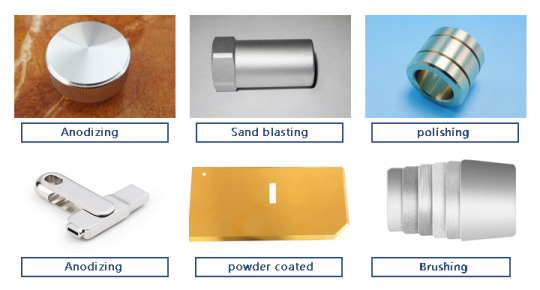
Using computer-aided design (CAD) software, a digital design is produced at the start of the process. The design acts as a guide for how the CNC machine should operate. The design is then transformed into a machine-readable format, often a G-code program, which gives instructions for the CNC machine after it is complete.
The ultimate product's needs are taken into consideration while selecting the material, which may be made of metals, polymers, or composites. By sawing the material into the required sizes, either manually or automatically, the material is prepared.
The prepared material is firmly secured to the work table of the CNC machine. The CNC program is entered into the machine's controller once the cutting tools, such as drills, mills, or lathes, are mounted during the CNC machining process.
After the machine is configured, the CNC controller reads the G-code program and gives precise instructions to the machine's motors to move the cutting tools. The cutting tools execute operations including drilling, milling, turning, and more to remove material in line with the design parameters.
Throughout the machining process, quality control procedures are used to make sure that the part's dimensions, tolerances, and surface finishes adhere to the necessary standards. To check accuracy, you could use measurement equipment like calipers, micrometers, or coordinate measuring machines (CMMs).
The advantages of CNC machining
The excellent precision and accuracy of CNC machining is well known. The process is computer-controlled, which guarantees consistent and dependable outcomes, making it perfect for applications that call for precise tolerances and complex geometries.
CNC machines can deal with a variety of materials, such as composites, metals, plastics, and wood. This adaptability makes it possible to produce a variety of components for different businesses.
Complex items may be produced fast and effectively using CNC machining. Once set up, the device can run alone with little assistance from a person. This shortens the production process and increases output in general.
It is possible to produce identical components with great repeatability using CNC prototype machining. Manufacturers can reliably make huge numbers of components because of the CNC program's ability to be stored and used again.
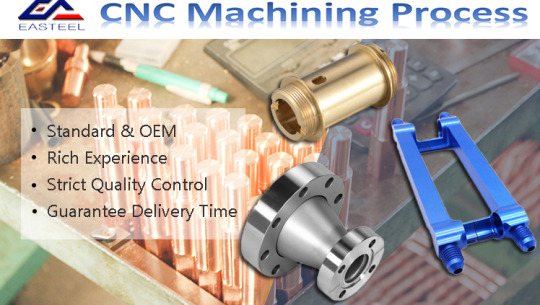
Main source: https://cneasteel.wordpress.com/
#CNC Machining#CNC Machining process#CNC Machining Techniques#CNC Prototype Machining#CNC Machining China
2 notes
·
View notes
Text
"Unlocking Precision and Creativity: A Comprehensive Guide to CNC Routers for Modern Makers"
In the realm of modern manufacturing and creative design, CNC routers have become indispensable tools, blending precision with creativity to produce stunning results. Whether you’re a seasoned craftsman or a newcomer eager to explore the world of CNC routing, mastering these machines can elevate your projects to new heights. This guide will delve into essential tips and techniques to help you unlock the full potential of your CNC router and achieve exceptional craftsmanship.
2 notes
·
View notes
Text
The Importance of High-tech Rapid Prototyping
In the industrial industry, precision is not only desirable—it is essential. Consider a situation in which parts of a jet engine are even marginally machined incorrectly or misaligned. The repercussions can be disastrous and might cause the engine to fail in midair. Precision becomes the key to success in sectors like aerospace, automotive, and medical where safety and dependability are non-negotiable. Put simply, it's the capacity to manufacture parts or components that precisely conform to given dimensions, tolerances, and quality requirements. It takes state-of-the-art equipment, painstaking attention to detail, and highly competent operators to achieve this degree of accuracy. This is the sweet spot for Precision CNC Machining.
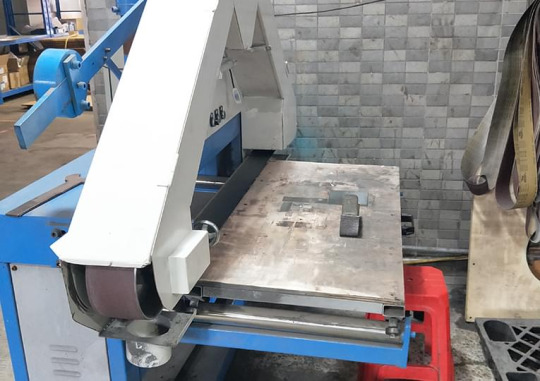
So how precisely can CNC machining accomplish such high precision levels?
Computerized Control: Advanced computer software is the brains of CNC machining, translating digital design requirements into exact motions and orders for the milling tools. This removes the possibility of human error and guarantees the highest level of precision in each cut, drill, and mill.
Superior Quality Equipment: Modern spindles, tools, and cutting implements that are designed to provide exact results are standard on CNC machines. These devices may operate at extremely tight tolerances, which are sometimes expressed in microns, guaranteeing an accurate reproduction of even the minutest features.
Consistency: The ability of CNC machining and High-tech Rapid Prototyping to manufacture similar components with little variance is one of its main advantages. A machine program that has been developed and tuned may be repeated endlessly with reliable outcomes. In fields where stability and dependability are critical, this degree of constancy is priceless.
Advanced Techniques: Multi-axis milling, turning, EDM (Electrical Discharge Machining), laser cutting, and other state-of-the-art methods are all included in CNC machining. With unmatched accuracy and efficiency, manufacturers can handle complicated geometries and materials thanks to these procedures.
Quality Assurance: CNC systems frequently include integrated quality control mechanisms including automated inspections, feedback loops, and real-time monitoring in addition to accurate machining. This reduces waste and rework by guaranteeing that any deviations from the intended standards are quickly identified and fixed. It is impossible to exaggerate the value of accuracy in production. Precision by Precision CNC Machining Manufacturer plays a crucial role in today's competitive economy, as it ensures everything from satisfying regulatory requirements and consumer expectations to assuring product performance and dependability.
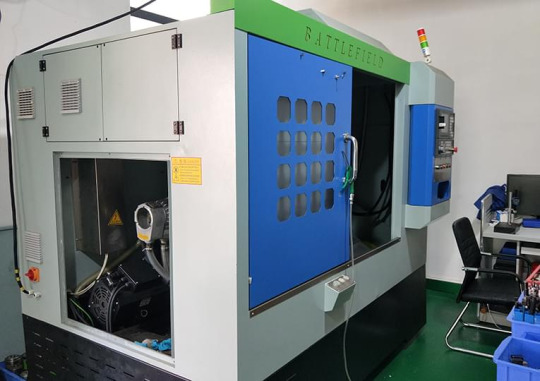
Follow our Facebook and Twitter for more information about our product
#High-tech Rapid Prototyping#Precision CNC Machining#Precision CNC Machining Manufacturer#CNC Machining Manufacturer Company
2 notes
·
View notes
Text
Exploring the World of Precision Machining
In the world of manufacturing, precision is paramount. The ability to create intricate and accurate components is a game-changer, and it's made possible by cutting-edge machinery. This article'll delve into the fascinating realm of precision machining, focusing on CNC grinding machines, gun drilling machines, and steering machines. These technological marvels have revolutionised the manufacturing industry, and we'll uncover their significance in this journey.
CNC Grinding Machine: Precision at Its Finest
When achieving unparalleled precision in machining, CNC grinding machine takes centre stage. These machines are designed to smooth and shape materials with incredible accuracy. With computer numerical control (CNC) technology at their core, CNC grinding machines efficiently execute complex tasks. They are the artisans of the manufacturing world, sculpting components to perfection.
The Anatomy of a CNC Grinding Machine
To truly appreciate the capabilities of a CNC grinding machine, it's essential to understand its components. We'll break down each part's role in creating precision components from the grinding wheel to the control panel. The grinding wheel, driven by advanced motors, meticulously removes material, while the CNC control unit orchestrates the entire process. It's a symphony of motion and control resulting in unparalleled precision components.
Gundrilling Machine: Drilling with Precision
Gundrilling is a specialised drilling process used in various industries, including aerospace and medical device manufacturing. Gundrilling machine is the unsung heroes of precision drilling, capable of creating deep and accurate holes. Let's delve into gun drilling and discover how these machines make the impossible possible.
The Marvel of Deep Hole Drilling
Gundrilling machines excel in drilling deep, straight holes with minimal deviation. We'll explore the techniques and technologies that enable these machines to achieve such precision in drilling. The secret lies in specialised tooling and coolant systems that ensure the drill bit remains cool and sharp, even during extended drilling operations. This combination of engineering prowess and cutting-edge technology results in flawlessly drilled holes that meet the strictest tolerances.
Steering Machines: Navigating the Future
In the automotive industry, precision is essential, and steering systems play a critical role. Steering machine is responsible for crafting components that ensure smooth and reliable steering performance. Join us as we navigate through the world of steering machines and their contribution to the automotive realm.
Crafting the Perfect Steering Component
Steering machines are tasked with creating components that must withstand immense forces while maintaining precision. We'll unravel the challenges and innovations that drive the development of these essential components. From forging to precision machining, steering components undergo rigorous processes that demand the utmost precision. Advanced materials and quality control measures ensure that each element meets stringent safety and performance standards.
Conclusion
In the world of precision machining, where every micrometer matters, CNC grinding machines, gun drilling machines, and steering machines shine as unsung heroes. Their precision and accuracy make the impossible possible, shaping industries and driving innovation.
To learn more about the world of precision machining and the remarkable machines that power it, visit WIDMA. Discover a world where precision knows no bounds and technology meets craftsmanship in perfect harmony.
3 notes
·
View notes
Text
Exploring the World of Leading Wire Harness Innovators
Wire harness manufacturers play a crucial role in various industries, providing essential components that ensure seamless connectivity and electrical integration in a wide array of applications. These manufacturers design and produce intricate wire harness systems tailored to specific requirements, adhering to strict quality standards and industry regulations.
For More Information Please visit, top wire harness manufacturers
key aspects of wire harness manufacturing
Industry Overview : Wire harness manufacturers operate in a highly competitive and evolving industry. They serve sectors such as automotive, aerospace, electronics, telecommunications, and healthcare, among others. The demand for custom wire harness solutions continues to grow as industries advance technologically.

Customization and Design : One of the significant aspects of wire harness manufacturing is customization. Manufacturers work closely with their clients to understand their unique needs. This involves designing wire harnesses that meet specific requirements, including size, shape, number of wires, insulation materials, and connector types.
Quality Assurance: Quality is paramount in wire harness manufacturing. Manufacturers invest in state-of-the-art testing equipment and employ skilled technicians to ensure that each harness meets the required standards. Rigorous testing procedures are in place to check for electrical continuity, insulation resistance, and overall durability.
Materials and Components: Wire harnesses consist of various materials and components, including wires, connectors, terminals, tubing, and insulation materials. Manufacturers carefully select these components based on the application's requirements, taking into account factors such as temperature, voltage, and environmental conditions.
Compliance and Certification: Wire harness manufacturers adhere to industry standards and regulations to guarantee the safety and performance of their products. Compliance with standards such as IPC/WHMA-A-620 ensures that the manufactured harnesses meet the necessary criteria for reliability and functionality.
Advanced Manufacturing Techniques : Modern wire harness manufacturing involves advanced techniques such as automated assembly, which enhances efficiency and precision. Computer Numerical Control (CNC) machines are employed for accurate cutting, stripping, and crimping of wires and connectors.
Supply Chain Management : Efficient supply chain management is crucial for timely production and delivery of wire harnesses. Manufacturers work closely with suppliers to source high-quality materials and components, ensuring a seamless flow of production.
Research and Development : Continuous research and development efforts drive innovation in the wire harness industry. Manufacturers invest in developing new materials, manufacturing processes, and technologies to improve the performance and longevity of wire harnesses.
Environmental Sustainability : Many wire harness manufacturers focus on sustainable practices, including the use of eco-friendly materials and recycling initiatives. Sustainability efforts contribute to reducing the environmental impact of manufacturing processes.

Conclusion
Wire harness manufacturers operate at the intersection of technology and precision engineering. Their commitment to quality, innovation, and customer satisfaction drives the industry forward, enabling seamless integration of electrical systems in various applications across the globe.
2 notes
·
View notes
Text
The Precision Craftsmanship of Surgical Instruments: Tools That Heal

Introduction
In the world of modern medicine, the art of surgery relies heavily on the precision and efficacy of surgical instruments. These remarkable tools, crafted with painstaking attention to detail, play a crucial role in the hands of skilled surgeons. They are the silent heroes in the operating room, helping to save lives and improve the quality of life for countless patients worldwide. In this article, we will delve into the fascinating world of surgical instruments, exploring their history, types, materials, and the importance of their design and maintenance.
A Brief History
The history of surgical instruments dates back thousands of years. Early examples of rudimentary surgical tools have been found in archaeological digs from ancient civilizations such as Egypt, Greece, and Rome. These early instruments were often made of materials like bronze and iron and were limited in their functionality.
It wasn't until the Renaissance that surgical instruments began to evolve into more specialized and effective tools. The works of pioneering surgeons like Ambroise Paré and Andreas Vesalius paved the way for the development of instruments tailored to specific surgical procedures. The Industrial Revolution further accelerated the production of surgical instruments, with advancements in metallurgy and manufacturing techniques.
Types of Surgical Instruments
Surgical instruments are incredibly diverse, designed to serve a wide range of medical needs. They can be broadly categorized into several groups:
Cutting and Dissecting Instruments: These instruments are used to cut through tissues, such as scalpels, scissors, and dissectors. Scalpels, in particular, come in various shapes and sizes to accommodate different surgical tasks.
Grasping and Holding Instruments: Forceps and clamps fall into this category, allowing surgeons to grasp and manipulate tissues, sutures, or other objects within the surgical field.
Hemostatic Instruments: Hemostasis is the control of bleeding during surgery. Instruments like hemostatic forceps and clamps help clamp blood vessels and prevent excessive bleeding.
Retractors: Retractors are used to hold tissues or organs aside, providing better visibility and access to the surgical area. Common retractors include wound retractors and self-retaining retractors.
Suturing and Stapling Instruments: These tools are essential for closing incisions or wounds. They include needle holders, suture scissors, and skin staplers.
Materials and Manufacturing
The materials used in surgical instrument production have evolved significantly over time. Stainless steel, due to its corrosion resistance and strength, is the most common material in modern surgical instruments. Some specialized instruments, such as those used in minimally invasive surgeries, are made from materials like titanium and carbon fiber, which offer unique advantages like reduced weight and enhanced durability.
Crafting surgical instruments is a meticulous process that demands precision and attention to detail. Manufacturers utilize advanced techniques such as CNC machining, laser cutting, and electro-polishing to ensure the instruments are of the highest quality. These instruments must meet strict regulatory standards to ensure patient safety and maintain their sterile condition.
Design and Ergonomics
Surgical instruments are designed with the utmost care to enhance the surgeon's performance. Ergonomics play a significant role in their design, as they must be comfortable to use for long periods. Grips, handles, and the arrangement of controls are carefully considered to minimize hand fatigue and improve maneuverability.
Maintenance and Sterilization
Proper maintenance and sterilization are paramount to the functionality and safety of surgical instruments. They undergo rigorous cleaning and sterilization processes to ensure they are free from contaminants and pathogens. Many instruments are designed for repeated use after thorough sterilization.
Conclusion
Surgical instruments are marvels of modern engineering and craftsmanship. Their evolution from basic tools to highly specialized, precision instruments has revolutionized the field of medicine. Surgeons rely on these instruments every day to perform life-saving procedures and improve the quality of life for patients around the world. As technology continues to advance, we can expect further innovations in the design and manufacturing of surgical instruments, enhancing their effectiveness and improving patient outcomes.
4 notes
·
View notes
Text
EXPLORING THE 5 COOL PARTNER SELLER ELECTRONICS PRODUCTS-Part1
Exploring the 5 Cool Partner Seller Electronics Products
Prologue
Are you an electronics enthusiast looking to expand your electronics project repertoire? Want to take your skills to the next level by exploring new and exciting products? Look no further than our list of five cool electronics products from partner sellers!
Whether you’re interested in building your own smart home devices, experimenting with sensors, or creating your own robot, these products are sure to inspire you. They cover a lot of application areas, from loop detectors used to monitor vehicle count in parking garages to Arduino CNC shields used in CNC machines, from simple pulse sensors used to detect cardiovascular pulse signals from fingertip to RGB LED panel light used in smart home, these products are unique, compact, and functional. Not only are these products fun to build and use but they’re also designed to help you learn new skills and techniques along the way.
What’s more, these products all come from trusted partner sellers who are committed to developing high-quality products. They’re happy to provide technical support for customers who have questions, so you can be sure you’re getting the best in electronics.
So get ready to dive into the world of electronics and explore these five cool partner seller products. You’re sure to find something that piques your interest and takes your own electronics projects to the next level.
Inductive Loop Vehicle Detector by Elektronika-ba
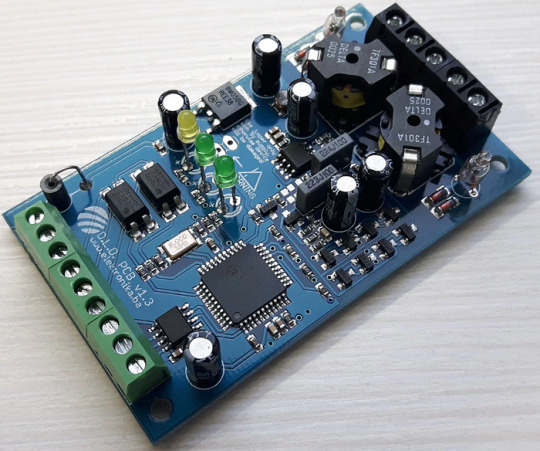
Whether you need to monitor occupancy and count vehicles in parking garages, control vehicle access at door and barrier controls, or facilitate traffic light installations and traffic controllers, the inductive loop detector is the perfect solution. It can even detect the direction and speed of vehicle traffic, making it an invaluable tool for a variety of traffic-related applications. In addition, this device can function as a stand-alone speed trap and can be easily interfaced with Arduino.
We can also provide a pre-programmed PIC chip to meet your project requirements.
Specifications
Number of operating modes: 4
Tuning: Automatic
Detection type: Presence/Pulse
Presence time: Adjustable in 3 steps
Pulse duration: 250 ms / 500 ms
Signal filtering: Adjustable in 2 steps (NORMAL, HIGH)
Loop inductance: 20 uH — 1000 uH
Frequency range: 20 kHz — 145 kHz
Frequency selection: 2 combinations (LOW, HIGH)
Sensitivity: Maximum 0.0025% Δf/f, adjustable in 8 steps
Detection speed: 10 ms by default, adjustable
Start-up time: ~ 1 second per channel (or longer if the frequency is not stable)
Temperature range: -35°C — 120°C
Sensor protection: Galvanic isolation + gas discharge tube for lightning protection
Don’t settle for less — click here to learn more about the Inductive Loop Vehicle Detector and experience the compact, yet cool detector!
Arduino CNC Shield V3.51 by Protoneer
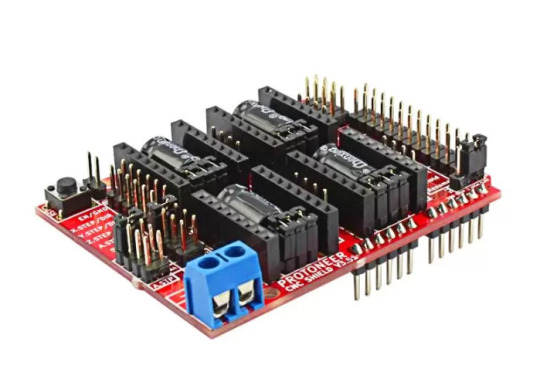
Designed by Protoneer, this kit is packed with features to ensure high precision control of your stepper motors, you can use it to easily build small CNC routers, DIY laser cutters, 3D printers, or any project that requires precise stepper motor control.
Our latest version 3.51 includes several enhancements to make assembly and installation even easier. We’ve added end-stop and probe signal filtering circuitry to eliminate false triggers and allow the use of unshielded cables for end-stops and probes. We’ve also increased the size of the solder pads for easier assembly and updated the probe pin labels to make installation a breeze.
With the Arduino CNC Shield Kit, you’ll have everything you need to build your own CNC router or mill with ease.
Features
Includes Noise Filers on all end stops and the probing pin. (New in V3.51)
GRBL 0.9 compatible. (Open source firmware that runs on an Arduino UNO that turns G-code commands into stepper signals https://github.com/grbl/grbl)
4-Axis support (X, Y, Z, A-Can duplicate X, Y, Z or do a full 4th axis with custom firmware using pins A4 and A3)
2 x End stops for each axis (6 in total)
Coolant enable
Uses removable Pololu A4988 compatible stepper drivers. (A4988, DRV8825 and others)(Not Included)
Jumpers to set the Micro-Stepping for the stepper drivers. (Some drivers like the DRV8825 can do up to 1/32 micro-stepping )
Compact design.
Stepper Motors can be connected with 4-pin molex connectors or soldered in place.
Runs on 12–36V DC. (At the moment only the Pololu DRV8825 drivers can handle up to 36V so please consider the operation voltage when powering the board.)
Don’t wait — click here to see more about the Arduino CNC Shield V3.51 and start your next project today!
Easy Pulse Mikro by Embedded Lab
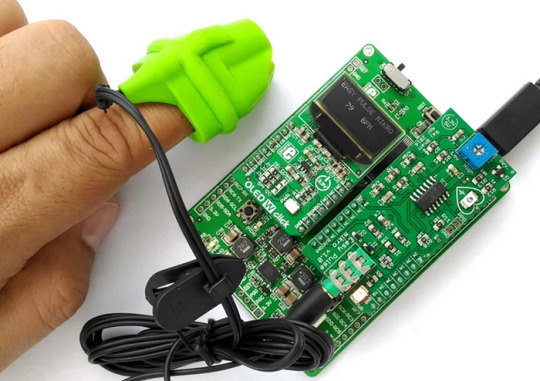
What’s more, the Easy Pulse Mikro is designed in the convenient Mikro bus form factor, making it easy to integrate with a wide range of mikroElektronika’s development boards. With all necessary instrumentation and amplification built right in, this powerful sensor provides a clean and precise analog PPG waveform output that’s routed to the AN pin of the mikroBus connector.
Whether you’re a hobbyist, student, or professional developer, the Easy Pulse mikro is the perfect tool for monitoring heart rate and other vital signs.
Click here to see more about the Easy Pulse mikro.
Features
Compatible with mikroBus socket.
Filtered and amplified analog PPG signal output
On-board potentiometer for adjusting amplifier gain, if needed (rotate clock-wise for increasing gain)
Onboard LED for indicating heartbeat. It flashes synchronously with the heartbeat on detecting the pulse from the fingertip.
2 notes
·
View notes
Text
Sheet Metal Works in Bangalore: A Hub of Innovation and Quality Fabrication

Bangalore, the Silicon Valley of India, is not only a tech powerhouse but also a thriving industrial hub with a strong presence in manufacturing and fabrication. Among the many sectors flourishing here, sheet metal works in Bangalore stand out as a vital component supporting various industries—from automotive and aerospace to construction and electronics. This blog explores the landscape of sheet metal fabrication in Bangalore, highlighting why this city is a preferred destination for high-quality sheet metal work, the role of leading fabrication companies in Bangalore, and insights into heavy fabrication companies in Bangalore catering to large-scale industrial needs.
What is Sheet Metal Work?
Sheet metal work involves the cutting, bending, and shaping of thin metal sheets into desired shapes and components. Metals such as steel, aluminum, copper, and brass are commonly used. These metal sheets are transformed into parts and structures that serve countless applications in manufacturing and engineering. The versatility of sheet metal fabrication allows for the production of complex shapes and durable parts that are crucial in machinery, vehicle bodies, electronic enclosures, ductwork, and architectural elements.
The Significance of Sheet Metal Works in Bangalore
Bangalore’s growth as an industrial and technological hub has increased demand for precision metal components. The city’s strong manufacturing ecosystem is supported by numerous fabrication companies in Bangalore that specialize in sheet metal work. This cluster enables businesses to source components locally, reduce lead times, and benefit from advanced fabrication techniques.
One key advantage of opting for sheet metal works in Bangalore is the availability of skilled labor. Engineers and craftsmen in Bangalore are adept at using modern tools such as CNC (Computer Numerical Control) machines, laser cutters, and robotic welding systems. This expertise ensures superior quality and consistency in every project, whether it’s a small batch of custom parts or large-scale production.
Additionally, Bangalore’s strategic location and robust logistics infrastructure facilitate smooth supply chain operations, making it easier for manufacturers to receive raw materials and dispatch finished goods promptly.
Types of Sheet Metal Fabrication Services Offered in Bangalore
The range of services provided by fabrication companies in Bangalore covers virtually all aspects of sheet metal work:
Cutting: Advanced cutting techniques including laser cutting, plasma cutting, water jet cutting, and shearing are used to achieve precise shapes and dimensions.
Bending: Press brakes and folding machines help create bends and folds in the sheet metal, essential for forming complex shapes.
Forming: Techniques like stamping and deep drawing are used to shape metal sheets into intricate designs or hollow structures.
Welding and Assembly: Skilled welders join components using TIG, MIG, or spot welding methods, ensuring strong and clean joints.
Finishing: Surface treatments such as powder coating, painting, anodizing, and galvanizing improve durability and aesthetics.
These services cater to a wide variety of sectors including automotive, aerospace, electronics, HVAC, architecture, and more.
Leading Fabrication Companies in Bangalore
Bangalore hosts an impressive array of fabrication companies that have carved a niche for themselves through quality and innovation. Many of these companies have invested heavily in automation and digital design tools like CAD (Computer-Aided Design) and CAM (Computer-Aided Manufacturing) to enhance precision and efficiency.
Customized Solutions: Fabrication companies in Bangalore understand the importance of customization in manufacturing. They work closely with clients to develop prototypes, optimize designs for manufacturability, and meet stringent quality standards.
Compliance and Quality Certifications: Many Bangalore-based fabrication companies maintain ISO certifications and adhere to international quality norms, providing assurance of reliability and durability.
Competitive Pricing: The presence of numerous fabricators creates a competitive environment that benefits customers through cost-effective solutions without compromising on quality.
Heavy Fabrication Companies in Bangalore: Meeting Large-Scale Industrial Demands
While sheet metal works often focus on smaller gauge metals, heavy fabrication companies in Bangalore specialize in working with thick plates and structural steel to create large, robust components for heavy industries. These companies play a crucial role in sectors such as construction, power plants, oil and gas, infrastructure, and shipbuilding.
Heavy fabrication involves:
Structural Fabrication: Creating frameworks and supports for buildings, bridges, and industrial plants.
Machinery Components: Producing large parts for manufacturing and processing machinery.
Pressure Vessels and Tanks: Fabrication of vessels designed to hold gases or liquids under pressure.
Industrial Equipment: Manufacturing heavy-duty equipment parts like cranes, conveyors, and loaders.
The scale and complexity of these projects require specialized equipment like gantry cranes, heavy-duty welding machines, and plate rolling machines. The heavy fabrication sector in Bangalore is equipped with these capabilities, ensuring timely delivery of large projects without compromising safety or quality.
Why Choose Bangalore for Sheet Metal and Heavy Fabrication?
Several factors make Bangalore a preferred destination for both sheet metal works and heavy fabrication:
Technological Edge: Bangalore’s IT ecosystem has spurred the adoption of Industry 4.0 practices, including automation, robotics, and smart manufacturing, in fabrication processes.
Skilled Workforce: The city benefits from a continuous supply of engineers and technicians from premier institutes who bring fresh knowledge and expertise.
Diverse Industrial Base: The presence of aerospace, automotive, electronics, and construction industries creates a steady demand and encourages innovation among fabrication firms.
Strong Vendor Network: Suppliers of raw materials, specialized tools, and logistics providers are readily available, ensuring smooth operations.
Focus on Sustainability: Many companies in Bangalore are adopting eco-friendly practices such as waste recycling, energy-efficient processes, and sustainable sourcing.
Emerging Trends in Sheet Metal Works and Fabrication in Bangalore
As the industry evolves, Bangalore is witnessing several trends in sheet metal and heavy fabrication:
Automation and Robotics: Increasing use of robotic welding and automated material handling improves productivity and precision.
Advanced Materials: Fabricators are working with new materials such as composites and high-strength alloys to meet demanding applications.
Digital Twin Technology: Virtual simulation of fabrication processes to optimize production and reduce errors.
Customization and Prototyping: Faster prototyping services using 3D printing and rapid manufacturing techniques.
These trends keep Bangalore at the forefront of fabrication technology, attracting domestic and international clients.
How to Choose the Right Fabrication Company in Bangalore
Selecting a fabrication partner requires careful consideration:
Experience and Expertise: Evaluate the company’s portfolio and sector experience.
Quality Certifications: Check for ISO or other relevant certifications.
Technology and Equipment: Ensure the company uses modern machinery and software.
Customer Feedback: Look for reviews and client testimonials.
Support Services: Consider design assistance, prototyping, and after-sales support.
By partnering with a reputable company, businesses can leverage Bangalore’s expertise to enhance product quality and speed to market.
Conclusion
Bangalore’s reputation as a leading center for sheet metal works in Bangalore, supported by a vibrant network of fabrication companies in Bangalore and specialized heavy fabrication companies in Bangalore, makes it an ideal choice for businesses requiring precision metal fabrication. The city combines technical excellence, skilled manpower, modern infrastructure, and competitive pricing, ensuring quality and efficiency for projects of any scale.
Whether you are in the automotive, aerospace, construction, or electronics sector, Bangalore offers comprehensive sheet metal and heavy fabrication solutions tailored to your needs. Investing in fabrication services here means tapping into a world-class manufacturing ecosystem that drives innovation and delivers exceptional results.
#precision sheet metal fabrication#sheet metal fabrication companies in bangalore#sheet metal works in bangalore#fabrication companies in bangalore#heavy fabrication companies in bangalore#sheet metal fabricators in bangalore
0 notes